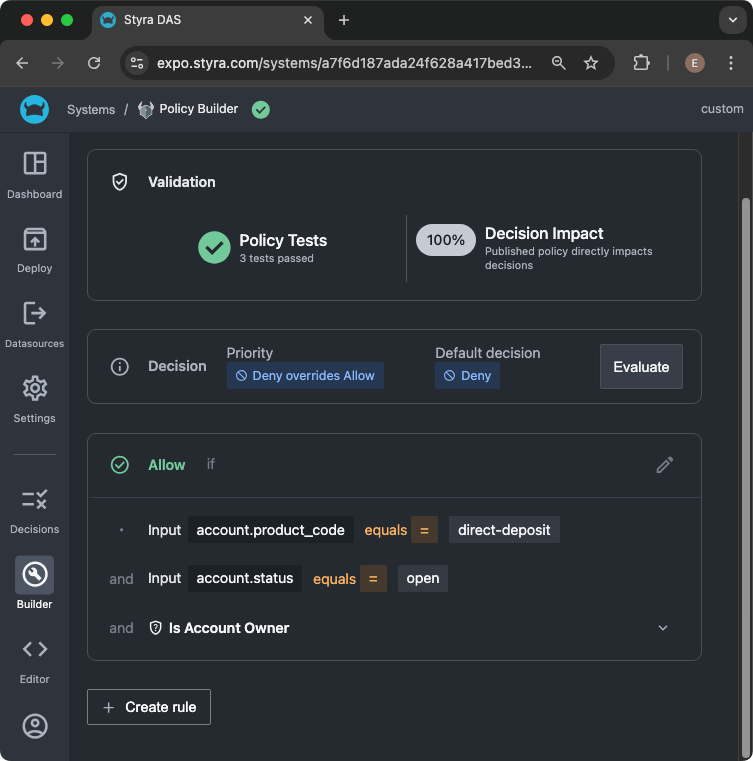A Low-Code Policy Builder for Rapid Development
Drawing with a Noodle: The State of Application Permission Development
In today’s digital-first enterprises, application permission logic has become increasingly complex. Traditional methods of managing this logic often involve ticket-driven workflows, where developers are tasked with translating business requirements into code. However, these requirements can be intricate and cumbersome to express in natural language, leading to challenges in accurately capturing and implementing the desired logic.
This challenge is further exacerbated by the need for frequent changes and tuning. As business needs and regulatory requirements evolve, the permission logic must be continually updated. Unfortunately, this process is time-consuming and error-prone. Overlooked cases can lead to significant incidents, including security breaches and operational disruptions, making it critical to have a robust and agile approach to managing application permission logic.
What Enterprises Need
To effectively manage application permission logic, enterprises require:
1. Fast Time to Change: The ability to implement changes quickly is crucial, particularly when responding to emerging business needs or security threats.
2. Accurate Logic: Ensuring that the authorization logic accurately accounts for all possible scenarios, including edge and corner cases, is essential to avoid security breaches and operational disruptions.
3. Minimal Developer Time: Developers are often stretched thin, so a solution must minimize the amount of time they spend implementing and maintaining permission logic.
A New Approach to Build Permission Logic Faster
Enter the Enterprise OPA Platform’s low-code policy builder. Now available for early access, it is a powerful tool that empowers product owners and security analysts to design, review, and experiment on application permission logic directly, while collaborating with application developers as needed. This approach offers a more agile and efficient way to manage permission logic, addressing the key challenges that enterprises face.
Example Scenario: Opening P2P Payments to a New Customer Category
Consider a scenario where a business decides to extend peer-to-peer payment functionality to a new category of customers. Traditionally, this would involve a lengthy process where the product owner formulates requirements in natural language, hands them off to developers, and waits for feasibility studies, engineering scoping, and implementation. This workflow often leads to extended iteration cycles to accurately implement complex permission logic.
With a low-code policy builder, this process is dramatically streamlined:
1. Rapid Authoring: The product owner can directly translate business requirements into executable logic using the low-code policy builder. Intuitive drop-down menus provide at the author’s finger tips the right “words” to express the desired conditions, while on-demand evaluation with visual explanations allows for immediate feedback and refinement. Furthermore, automatic back-testing helps the product owner understand the impact of changes and prevent regressions.
2. Review and Approval: Before accepting changes into the primary code branch, developers and security analysts can review the updates. This review can happen in two ways:
- Directly within the low-code policy builder, where the same powerful tools that enable rapid authoring also help reviewers assess the business and security implications of the policy.
- Within a familiar Git workflow, where the clean, idiomatic policy code generated by the low-code builder can be examined.
3. QA and Production: Once reviewed, the changes move seamlessly to QA and production. The team can be confident in meeting both business objectives and security standards, thanks to the collaborative, hands-on approach enabled by the low-code policy builder.
This streamlined process fosters cross-functional collaboration, reduces iteration cycles, and helps the business deliver the right access to the right users quickly and safely.
Powering Agile and Secure Application Permissions
The Enterprise OPA Platform’s low-code policy builder represents a significant advancement in how enterprises manage application permission logic. By enabling product owners, developers, and security analysts to collaborate more effectively, it ensures that permission logic is accurate, up-to-date, and quickly adaptable to changing business and regulatory needs. This not only reduces the risk of incidents but also frees up valuable developer time for more focus on innovation.
In a time where speed and security are paramount, the Enterprise OPA Platform is an invaluable tool for enterprises looking to stay ahead of the curve.
How Do I Get Started
Not yet a Styra user? Book a demo today to explore the low-code workflows in real time! Already with Styra? Contact your enterprise account executive to get early access on your Styra DAS.
